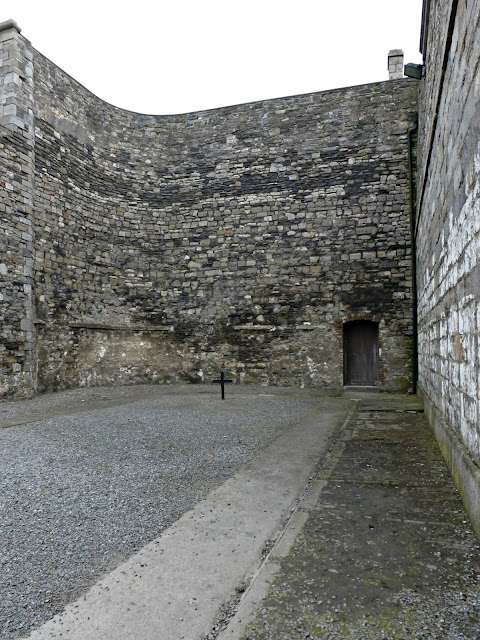Kilmainham
Gaol was a prison built in Kilmainham in Dublin in 1796, intended to replace a
dungeon nearby. There was no segregation of prisoners; men, women, and children
were incarcerated up to 5 in each cell, with only a single candle for light and
heat. The candle had to last the prisoner for two weeks. The cells were 28
meters squared. There are even records of a few children held there who were around
but 5 years of age.
Many
leaders of Irish rebellions were imprisoned including Emmet, Parnell, Davitt,
Patrick Pearse, William Pearse, Connolly, de Valera, Plunkett, MacDonagh, and
Countess Markievicz, and fourteen were executed by the British and in 1923 by
the Irish Free State.
Kilmainham
Gaol was decommissioned as a prison by the Irish Free State government in 1924;
at this time there was no declared interest in its preservation as a monument
to the struggle for national independence because of its reputation for
oppression and suffering.
After WWII
an architectural survey revealed that the jail was in a ruinous condition. In
the 1950s, still no advancement on any preservation was taking place. The
Kilmainham Jail Restoration Society in 1958 decided to restore the prison and
build a museum using voluntary labor and donated materials. After much
restoration, it was finally opened to the public in 1971.
It has been run by the
Office of Public Works (OPW) since the mid-1980s.
Today, the
prison houses a museum on the history of Irish nationalism and offers guided
tours. An art gallery on the top floor exhibits paintings, sculptures and
jewelry of prisoners incarcerated in prisons all over contemporary Ireland.
Members of our group found the Kilmainham Gaol to be both an extremely interesting site to visit, but also to be very moving, hearing about the sort of conditions the prisoners faced in their time there. It was perplexing to consider the decisions of how poor to make their conditions, especially in light of what the tour guide explained about how since the general population was experiencing such poverty, they had to make prison conditions even worse than what they were experiencing because people were committing crimes just to be put in prison so that they could survive. This gave us a more concrete feel for what the Irish people were experiencing. It was also surreal to see the prison cells of such famous figures in Irish history, knowing the willingness with which they faced these conditions and, for many of them, faced execution. Seeing the execution yard was also very surreal as well as moving.
 |
| Cell of Constance Markievicz |
 |
| Newer wing of the prison, modeled after the Victorian prisons' style |
 |
| Prison execution yard |

No comments:
Post a Comment